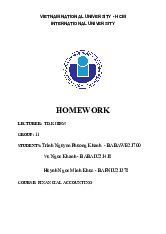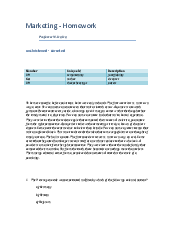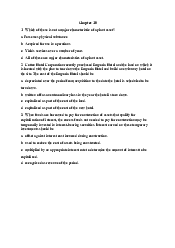



Preview text:
LECTURE 1 : ACCOUNTING IN ACTION
Three main activities of accounting : identify, record, communicate
The accounting process includes the bookkeeping function
Internal Users : using Managerial Accounting
External Users ( investor, creditor, investor) : using Financial Accounting
Measurement Principle :
Historical cost : dictates that companies record assets at their cost
FAIR VALUE PRINCIPLE states that assets and liabilities
should be reported at fair value (the price received to sell an asset or settle a liability)
Two qualities that make accounting info useful for decision making : Relevance and faithful representation Assumptions :
- Monetary unit assumption : requires that companies include in the
accounting records only transaction data that
can be expressed in terms of money.
- Economic entity assumption : requires that
activities of the entity be kept separate and distinct from the
activities of its owner and all other economic entities
Residual equity = Owner’s equity Equity
Increase by investment and revenue
Decrease by dividend/ drawing and expense
Count as transaction only when the financial position ( asset, liability, equity) of the company change.
Five financial statement : Income Statement Retained Earnings Statement
Statement of Financial Position Statement of Cash Flow
Comprehensive Income Statement
Data are recorded in chronological order.
Contributions to the recording process:
1. Discloses the complete effects of a transaction.
2. Provides a chronological record of transactions.
3. Helps to prevent or locate errors because the debit
and credit amounts can be easily compared Lecture 3 L
Time Period Assumption : Accountant divide the economic life of a business into artificial time periods ,
generally a month , a quarter,or a year ( Periodicity Assumption)
Monthly and quarterly time periods are called interim period
Fiscal year = Accounting time period that is one year in length
Calendar Year = January 1 to December 31
Two types of Accounting Accrual – basis Accounting :
Transactions recorded in the periods in which the events occur. Companies r
ecognize revenues when they perform
services (rather than when they receive cash). Expenses are r
ecognized when incurred (rather than when paid)
Cash Basis Accounting : recored when cash is received/ paid
Revenue Recognition Principle :Recognize revenue in the accounting period in which the performance obligation is statisfied
Customer requests service -> Satisfied performance obligation – Cash received
Expense recognition principle : Mat Match expenses with revenues in the period when the company makes efforts to generate those revenues. “Let the expenses follow the revenues.
Adjusting entries will include one income statement account an one statement of financial position account
Deferrals are expenses or revenues that are
recognized at a date later than the point when cash was originally exchanged.
Depreciation is the process of allocating the cost of an
asset to expense over its useful life, does not attempt to report the actual
change in the value of the asset
Book value is the difference between the cost of any
depreciable asset and its accumulated depreciation Accrued interest
Signed a three-month note payable in thr amount of ₺5,000 on October 1. The note requires
Yazici to pay interest at an annual rate of 12%
=> Find down interest expense you have to pay in one month Retained earning
Công thứ c tnh interest rate A= P ( 1+ r/n) ^ nt
Owner’s Equity (beginning) + Investments – Withdrawals + Revenues – Expenses = Owner’s Equity (ending) Các b c c ướ ủa Accounting
Net income is shown on a worksheet in the income statement debit column and balance sheet credit column. Đ hai balance = nhau ể
On the contrary , net loss ( expense > revenue ) show in the income statement in the credit column and balance sheet debit column
Temporary account ( are closed) : All revenue, expense , owner’s drawing
Permanent account ( are not closed ) : all asset, liability , owner’s capital
Closing entries formally recognize in the ledger the transfer of net income or net loss and owner’s drawings to owner’s capital
Correcting entries must be posted before closing entries Classified balance sheet




